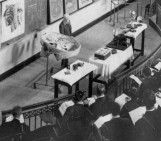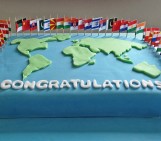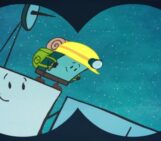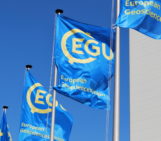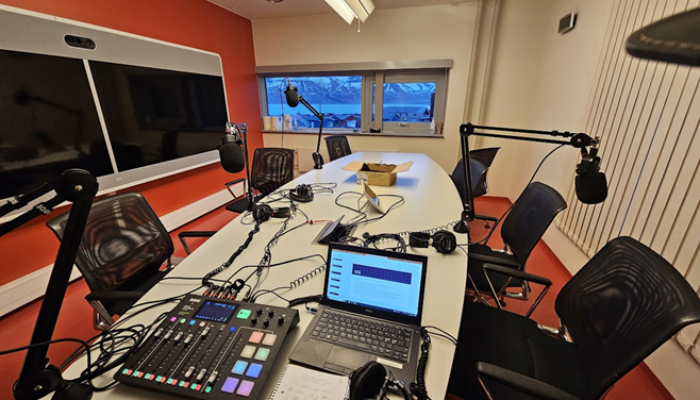
A giant microphone sits a few cm’s from my face. I am having vivid flashbacks to pre-show jitters and stage-fright from my earlier forages into on stage productions. Only now I’m an adult, an expert, a scientist. Our host pushes the record button. Live radio!
A brilliant (?) idea takes shape
I was contacted by a Norwegian scientific radio programme, Abels Tårn, and asked if I could answer questions on geology. I immediately hesitated. Not because I don’t love the chance to talk, and even better, basically perform. I’m a former stage monkey turned dull associate professor in geology. I rarely get the chance to use my full repertoire, although the students do occasionally have to put up with the odd comedic routine during lectures. This was, however, real live radio, and in Norwegian, which is not my first, or third, language for that matter, but something in which I can communicate as I am Swedish. After having been assured that my “radio voice” (thank you theatre training) was more important than my Norwegian skills, I set to work ploughing through the questions, sifting through information and putting together concise popular scientific summaries of the information.
You know what? It was brilliant. It was a fantastic way to learn, and to learn properly. The radio experience itself was also terrific, nerve-wracking to be sure, the old stage jitters were felt acutely, but it was fun. I had enjoyed the research, the practicing, and the performance. I had learned heaps, without feeling the full brunt of studying. I also, truly, felt the connection between the tedious hours of lab-work, field-work, painstaking publication process to actual societal relevance of what we, in research, actually do.
It was one of those moments when you think ‘this, this is something I want others to experience’.
Implementing a new teaching tool
On Svalbard I teach a CO2 storage course which I designed to be as realistic as possible. The students are divided into groups and create consultancy firms, they are fed with real data during the course and at the end submit a report based on their findings and their evaluation. A new idea took form. What if their consultancy firms were invited to participate in a podcast? What if they had to answer questions on CO2 storage asked not by their teacher, but by “members of the public”. What if they got a chance to see what they are learning not as information in a book or an article, but as information that has actual value? What if I flipped the classroom completely? I would act as the PodCast host, fairly oblivious to the deeper understanding of CO2 storage, they as the experts, would need to dig deeper into the material, thereby learning more, connect the things we had learned in class to societal relevance and have to find words to explain things so that everyone could understand. Explaining complex issues simply, after all, requires actual understanding. Lastly, I am a firm believer that magic happens when we step outside our comfort zone. The room was to be set up with professional material, microphones and head-sets, we would be recording everything.
I could sense the nerves beneath the surface when the students entered the mobile PodCast studio I had set up. I myself was also in a new situation, I had to field the questions, pass the baton, liaison live between the students, maintain the flow. I had to trust the process that together we could transition into new roles and work together. It was new to them, it was new to me. Pressing the giant green record button and watching it turn red felt quite exciting.
“Hello everyone and welcome to ‘On Frozen Ground’ hosted live from the Arctic, and welcome to the team from CarbonStore Solutions!” We were away.
Active learning – handing over the reigns
The questions sent into Abels Tårn span a wide range of topics, but they all capture the perspective of the broader public; the people affected by the earthquakes, confused by the weather, worried about the mining, residing on the quick-clay. The questions asked are not ‘what is CCS’, but rather why don’t we farm more mussels to capture CO2 in their shells? The questions target not just the cause, the mechanisms, but rather the effects and the implications. It shifts our whole perspective. Geoscience holds so much weight in relation to the real world, the problems, and the solutions.
I instinctively felt there would be multiple benefits to a podcast class. All the things I had experienced, I hoped my students would too. Pedagogic theory doesn’t always align perfectly with instinct, but in this case, research is clear: active learning, especially in flipped classroom settings, promotes deeper learning. Traditional lecturing and rote memorization often lead to superficial retention, while student-centered learning fosters a deeper understanding of material.
The podcast setup was designed entirely around active learning. Preparing required critical evaluation, data organization, and integration, while the recording sessions demanded participation, peer interaction, and memory retrieval.
Beyond the pedagogic benefits, it’s really fun. It breaks down barriers between students and teachers and elevates performances with that big red record button.
For me, it’s a win-win-win-win kind of teaching tool.
Interactive learning formats demand something not just from the students but also from you, the educator. Magic happens when we think outside the box and step outside our comfort zones. If you lead, and they follow, you might feel the discomfort of the unknown—but it’s an amazing path to tread.


